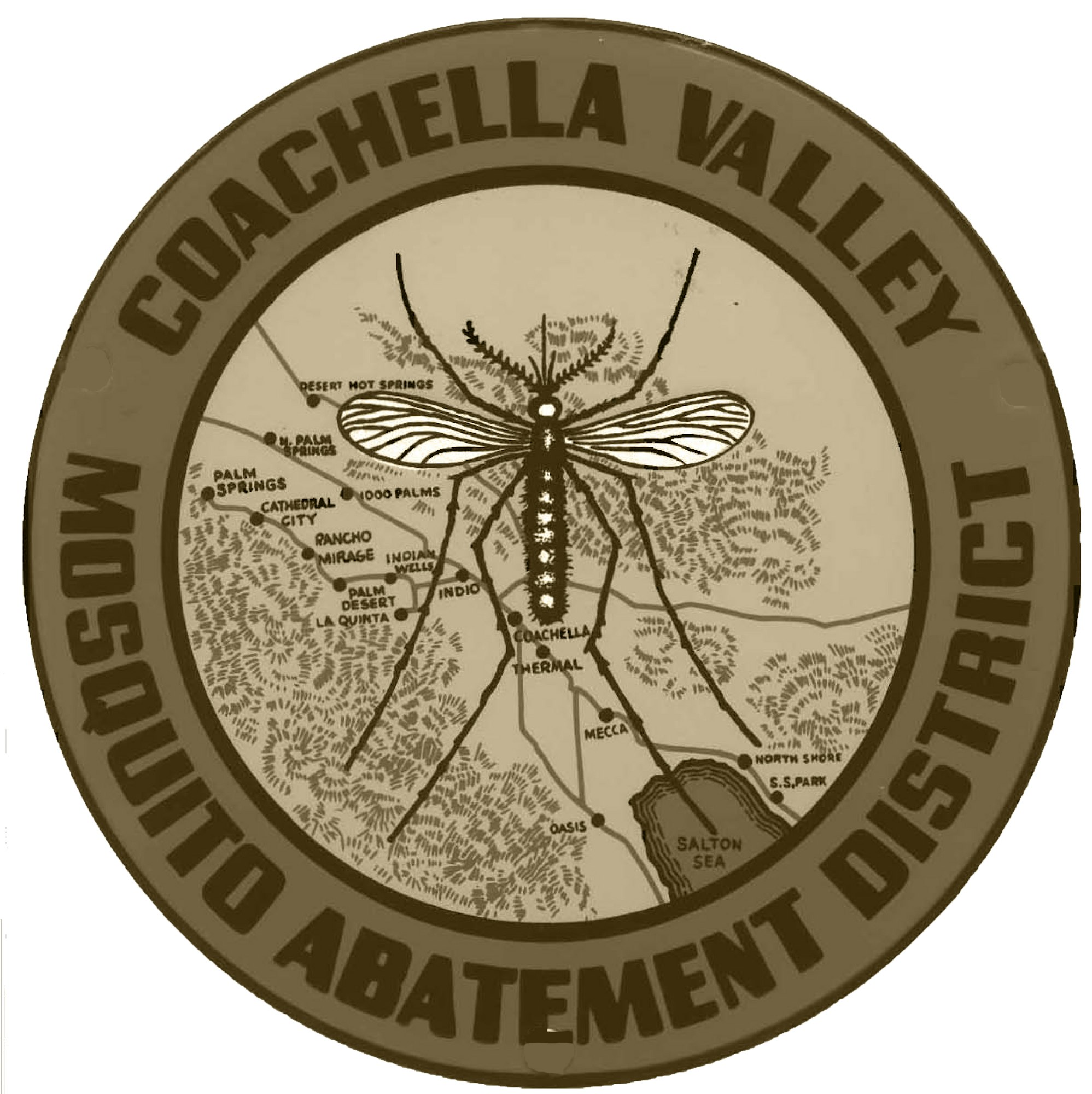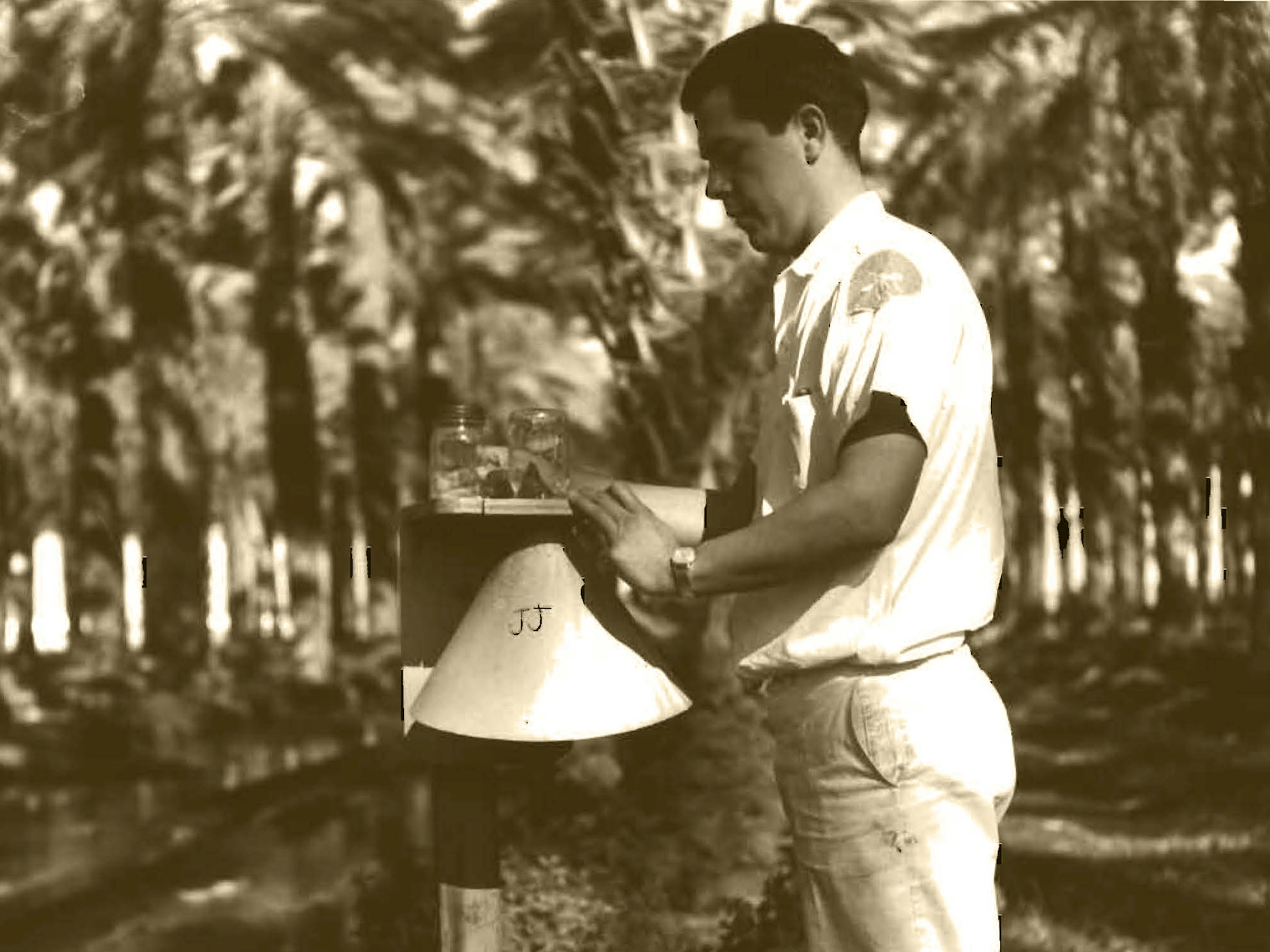History














Mission
We are dedicated to enhancing the quality of life for our community by providing effective and environmentally sound vector control and vector-borne disease prevention programs.
Vision
To progress towards a future free of vector-borne disease using proven scientific, technical, and educational strategies, which are financially and environmentally sound.
During the mid-1920s, eye gnats (Hippelates) had become a significant problem in the Coachella Valley. Mass meetings were held resulting in petitions sent to the University of California, the State and County Boards of Health, and the Federal Government asking for immediate assistance. The concern was, not just the nuisance that eye gnats were causing, but that eye gnats are potential mechanical vectors of conjunctivitis (“pink eye”).

In 1927, “pink eye” had become so prevalent that schools in the Coachella Valley were closed for two months during the eye gnat season. To address the problem, Dr. William B. Herms of the University of California, Berkley sent researchers to the Valley and the Federal Government appropriated $12,000.00 for study of eye gnats. The Bureau of Entomology established a Gnat Research Laboratory with four entomologists, D.C. Parman as head, David G. Hall, Gaylon W. Robertson, and Robert W. Burgess.
On March 12, 1928, the Coachella Valley Mosquito Abatement District was formed under the California Mosquito Abatement by the Riverside County Board of Supervisors to combat eye gnats. At the time, seven trustees were appointed by the Riverside County Board of Supervisors to create and oversee District policies.
In October 1948, the first District entomologist, Dr. Ernest R. Tinkham, began his intensive research into eye gnat control. Dr. Tinkham confirmed that eye gnats could be controlled by the application of insecticide to the soil where eye gnat larvae breed. The District employed this practice for many years until insect resistance, environmental concerns, and budgetary constraints made it no longer feasible. In 1956, Dr. Mir Mulla from the University of California, Riverside collaborated with the District in extensive research on eye gnats, including their habitats and control techniques, introducing a method termed “trapping out,” using non-pesticide attractant to draw the flies in the traps and deplete them locally.
In 1949, the Coachella Valley Canal was completed bringing an abundance of water to the Valley, which resulted in the formation of mosquito breeding sites from irrigation runoff. The abundance of mosquitoes created a nuisance as well as a health threat in the form of mosquito-borne virus transmission.
In January 1951, the Board of Trustees of the District formed a Mosquito Control Department in addition to the eye gnat control.
In 1995, the Board of Trustees expanded the District to a full vector control agency and changed the name to the Coachella Valley Mosquito and Vector Control District. With this expansion in programs came the need for a larger, modern headquarters to meet work and safety requirements.
In April 2001, the District moved from its Thermal headquarters, where it had been located for 73 years, to the new headquarters in Indio.
In 2005, the District added the Red Imported Fire Ant (RIFA) Program. Valley residents suffering from RIFA infestations could now call the District for property inspections and treatment of this pest.
In 2006, the Bio-Control Facility was completed as a result of the District’s commitment to research and apply the latest integrated methods to control mosquitoes. At present mosquitofish, nematodes and tadpole shrimp are being investigated for suitability in various habitats in the Coachella Valley.
In 2014, the District completed a laboratory upgrade and expansion project, which allowed District biologists to carry out virus testing of mosquitoes on site. As a result, technicians are able to respond more quickly to the detection of mosquito virus activity, such as West Nile or St. Louis encephalitis. A quicker response enables the District to have better success in interrupting virus transmission and limiting the spread of virus through the area. The longer the virus is allowed to persist without pressure put on the mosquito population the greater the chances there are of the virus spreading over larger areas, and there is greater potential for mosquitoes to infect people.
In 2016, Aedes aegypti was detected in the Coachella Valley. This invasive mosquito species is not native to the area and has the potential to transmit deadly viruses including dengue, chikungunya, Zika, and yellow fever, viruses not currently transmitted in California by mosquitoes. Other communities in California have been battling infestations of this mosquito species for several years. The mosquitoes are a threat not only because they can carry deadly diseases, but also because they bite aggressively during the day. The District has responded with teams doing door-to-door inspections in neighborhoods where the mosquitoes are present and helping residents get rid of standing water sources on their properties, where mosquitoes lay eggs. Learn more.
Today: The District has 58 full time employees and a Code of Conduct to operate responsibly – socially, environmentally, and fiscally. Through an Integrated Vector Management program including Surveillance, Control, and Public Outreach and Education, the District’s goal is to keep Coachella Valley residents and visitors safe from vector-borne diseases with a dedicated and professional staff, fiscal security, and administrative guidance from the Board of Trustees.
Check out the quarter century of research carried out at the District in this presentation to the District Board of Trustees in July 2013 by Dr. William Reisen.
University of California Research in Coachella Valley: a quarter century of collaboration (William K. Reisen and Hugh D. Lothrop)

